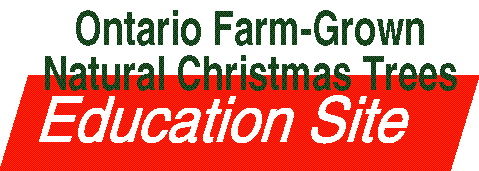
TEACHING PLANS Lesson Five: Identifying Christmas Trees
Desired Learning Outcome:
Background:
Teaching Suggestions:
Suggested Questions:
STUDENTS' PACKAGE Lesson Five: Identifying Christmas Trees
SCOTS PINE - Pinus sylvestris
WHITE PINE - Pinus strobus
BALSAM FIR - Abies balsamea
WHITE SPRUCE - Picea glauca
- conifer - means cone bearer; conifers produce their seedsin
cones. Most conifers are evergreen because they hold their needles throughout
the winter
- coniferous - a cone bearing tree such as spruce or pine. The
foilage is usually evergreen
- deciduous - plants which shed their needles annually. Deciduous
trees include the broadleaf Maples, Oaks, Poplars and Elms
photosynthesis - the process by which green plants manufacture sugar
from water and carbon dioxide from the air. Oxygen is released into the
air through this process. Green plants, through photosynthesis, help purify
our air
-
- stomata - pores that appear on the underside of needles and
allow the escape of moisture between the tree and the air. Coniferous needles
have very few stomata, which helps to conserve moisture
E-mail: ctfo@christmastrees.on.ca

